Read the report in layouted PDF form: WC2025 F3B Report
by Christian Rieger, Team Manager Germany
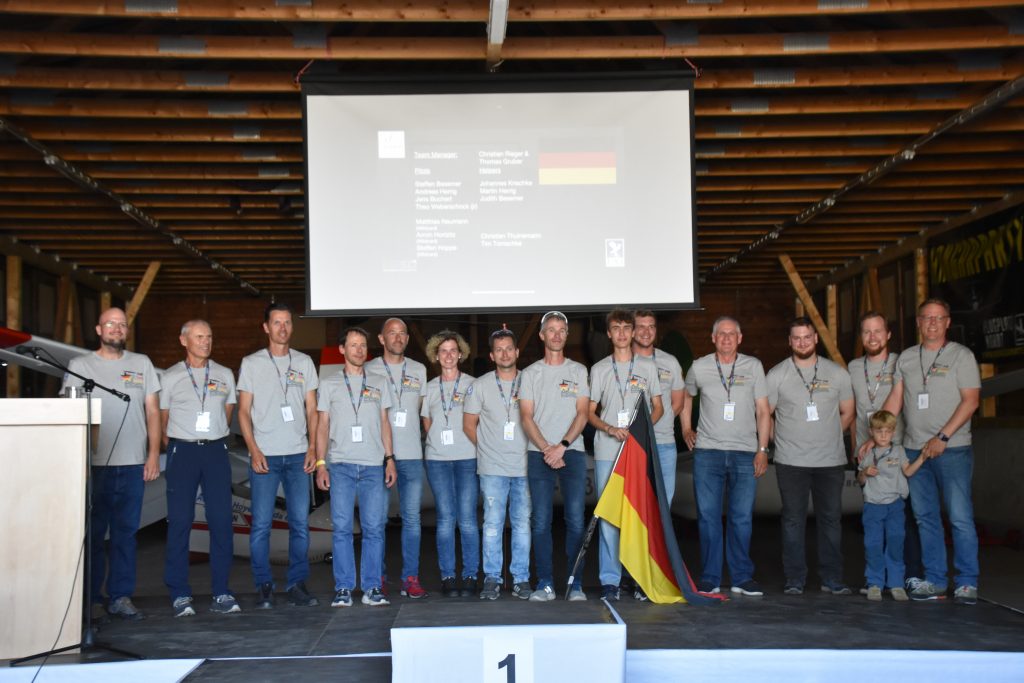
Introduction
In 2025, the F3B World Championships were held in Nardt, Germany. For our team it was special to have the event at home, but the credit for bringing the World Championships here goes entirely to the aeroclub of Hoyerswerda and the official organizers, who managed every detail with enthusiasm and dedication.
As the German national team, we were one of many nations arriving with the same hopes: to compete at the highest level, to test ourselves against the world’s best, and to share a week of flying, friendship, and sport.
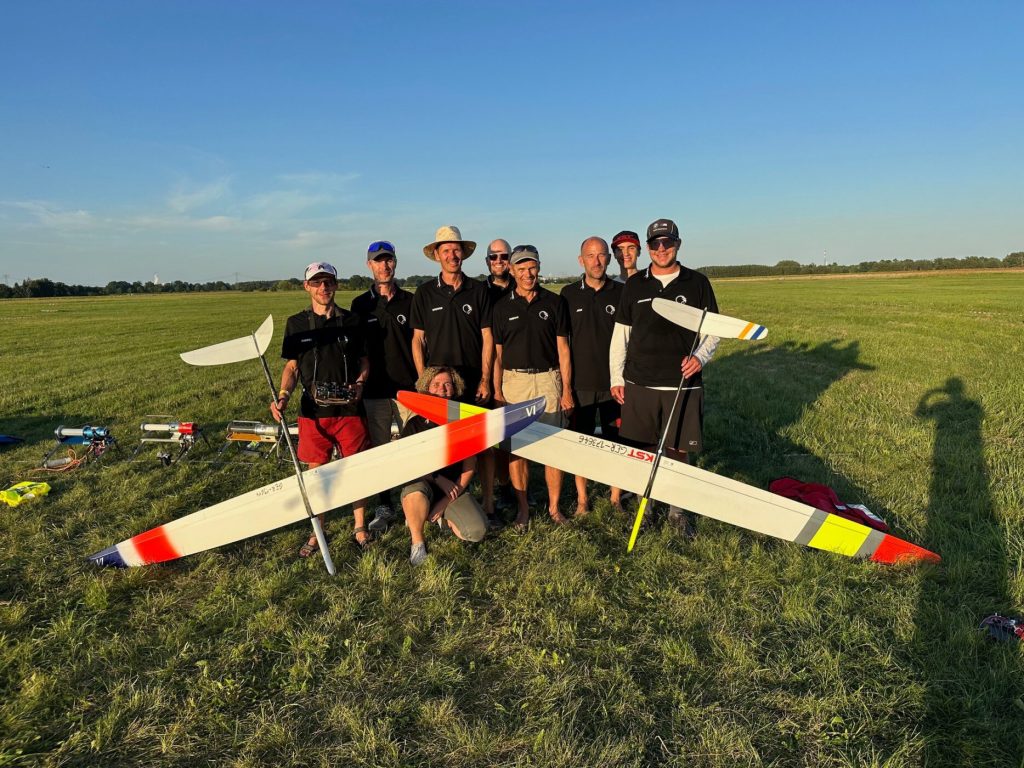
Team Selection & Preparation
Germany has a large and competitive F3B community, so the path to the national team is tough. Pilots must perform consistently at the very top for two years to qualify.
For 2025, Steffen Besemer, Andreas Herrig, and Jens Buchert secured their spots as senior pilots. Theo Weberschock was nominated as youth pilot—an impressive step so early in his F3B career.
When the World Championship organizers invited additional pilots to strengthen participation, Matthias Neumann joined us as part of the German working team, while Armin Hortzitz and Steffen Hoppe competed as independent wildcard pilots.
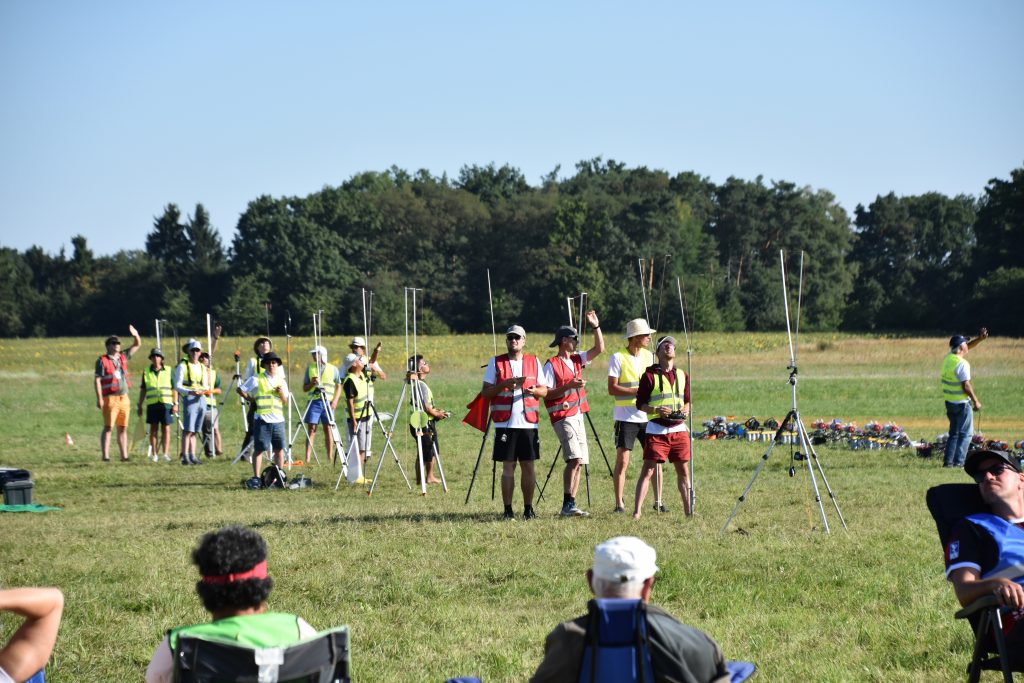
To get ready, we made use of this year’s contests, held a dedicated training weekend to check winch setups, and arrived in Nardt early for the Pre-Contest. Already then it was clear: the official organizers had prepared an excellent stage, with everything running smoothly from the very start.
Behind our German pilots stood an equally dedicated support crew: Thomas Gruber (Assistant TM), Johannes Krischke, Martin Herrig, and Judith Besemer. Their tireless work on the flight field and in the background was the foundation of our performance. A heartfelt thank-you to all of them!
We also warmly thank our sponsors—Hölleinshop, Chaservo, Hepf, Airclip, and Mandrill—without whom our participation would not have been possible.
What is F3B? (Click to open)
F3B is one of the most demanding model flying category, combining three tasks:
- Duration – staying aloft for up to 10 minutes using thermals and landing precisely on a marked point.
- Distance – flying back and forth over a 150 m course as many times as possible within 4 minutes.
- Speed – flying four legs of the same course as fast as possible, typically in 14–20 seconds.
For each flight, the model glider is started with the help of an electric winch.
What makes F3B unique is that pilots must master all three disciplines equally well.
Success requires precision, strategy, and strong teamwork.
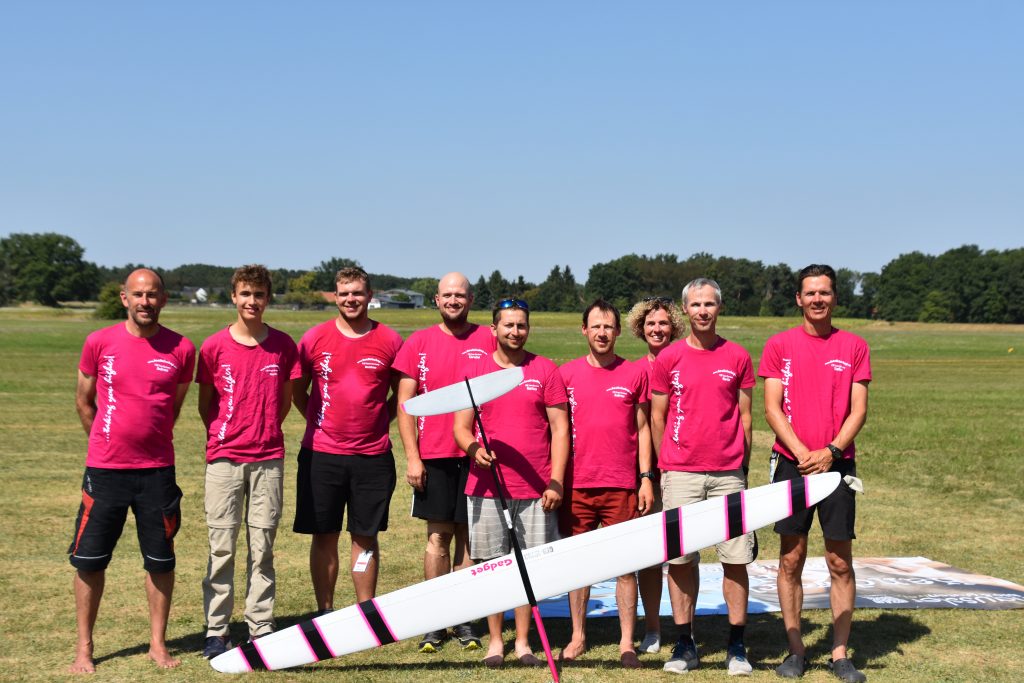
The Competition Week
The Championships began with the Pre-Contest, where our team still had some details to sort out. Andreas, however, showed strong form and won the event—a promising start, though some joked that the Pre-Contest winner rarely becomes World Champion.
Once the actual World Championship started on Monday morning, the atmosphere fortunately shifted, and our team quickly settled into its rhythm.
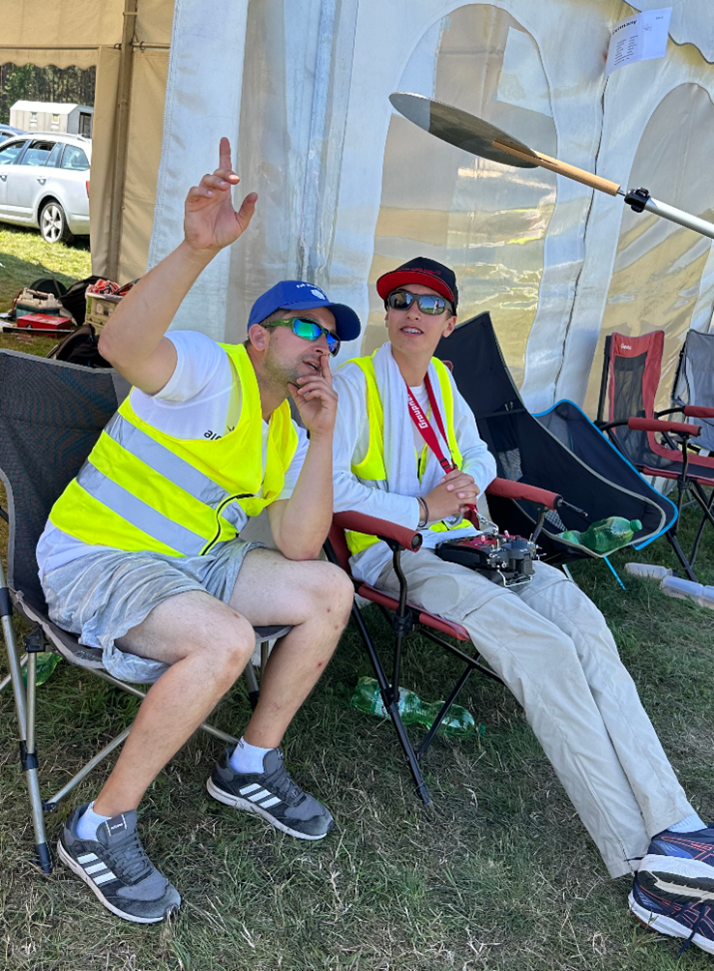
The flying conditions throughout the week proved to be tricky. Launch heights remained low due to calm winds, and immobile thermals that almost stayed in one spot and switched on or off unpredictably. This made both Duration and Distance flights challenging and sometimes nerve-wracking.
In one memorable moment, Theo found himself circling at only 20 meters for much of Duration Round 3, while the entire team watched with their hearts in their throats. With patience and precision, he managed to climb back into strong lift and not only completed the task but did so with altitude to spare.
In Distance, precision was the key. A good launch and perfectly timed turns made all the difference, and when one of the rare thermals appeared, the pilot had to react instantly. The team managed this consistently well, while Matthias even achieved a perfect run of eight 1000-point flights—an outstanding accomplishment.
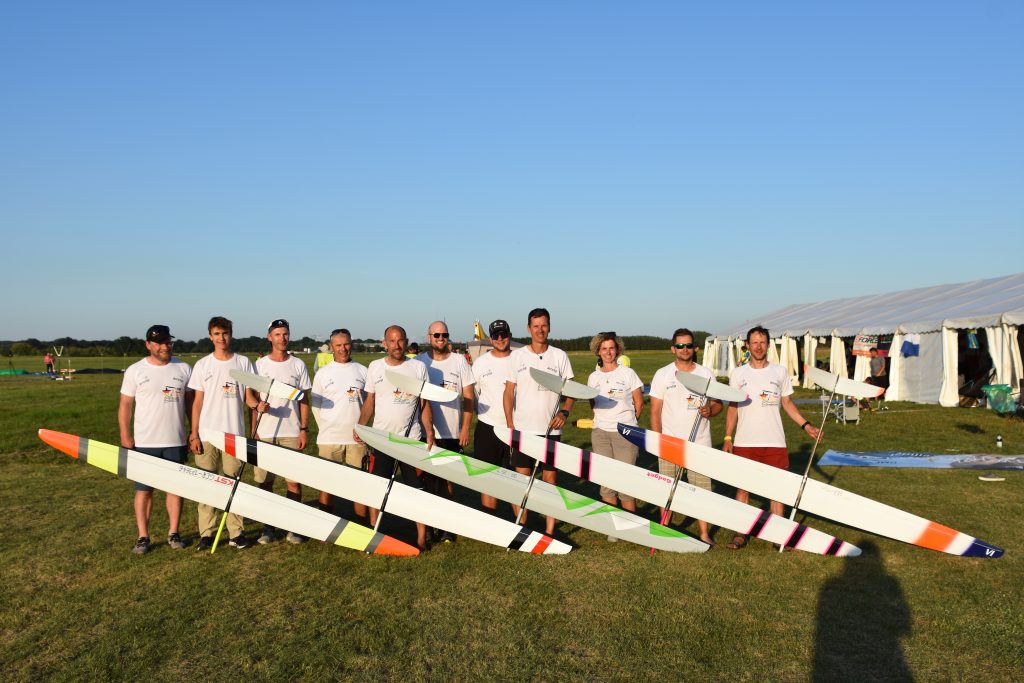
The Speed rounds brought their own drama. Thermals played tricks, sometimes helping, sometimes hurting, and the difference between a top result and a lost opportunity could be just a few seconds of wait-time. Each of our three senior pilots managed to claim two 1000-point flights, showing the strength of their preparation. Andreas and Jens kept us all excited as they battled each other round after round, with only a handful of points separating them. In the end, their duel for first place came down to the very last speed flight, with less than 20 points between them — the rough equivalent of just three tenths of a second on the clock.
Team Germany Results (Click to open)
In the end, the German team achieved remarkable success:
- Individual World Champion: Andreas Herrig (closely followed by Jens Buchert on 2, Steffen Besemer on 4 and Matthias Neumann on 9)
- Youth World Champion: Theo Weberschock (place 24)
- Team World Champion: Germany (ahead of Austria and Czech Republic)
Other top performances came from strong contenders, such as Jürgen Pölzl (AUT) who finished third; Petr Fusek (CZE), Armin Hortzitz (GER Wildcard) and Herman Stahl (SWE) being contenders until the last flights, while Frits Donker Duyvis (NED) and Naoto Sakurai (JAP) kept us nervous all week!
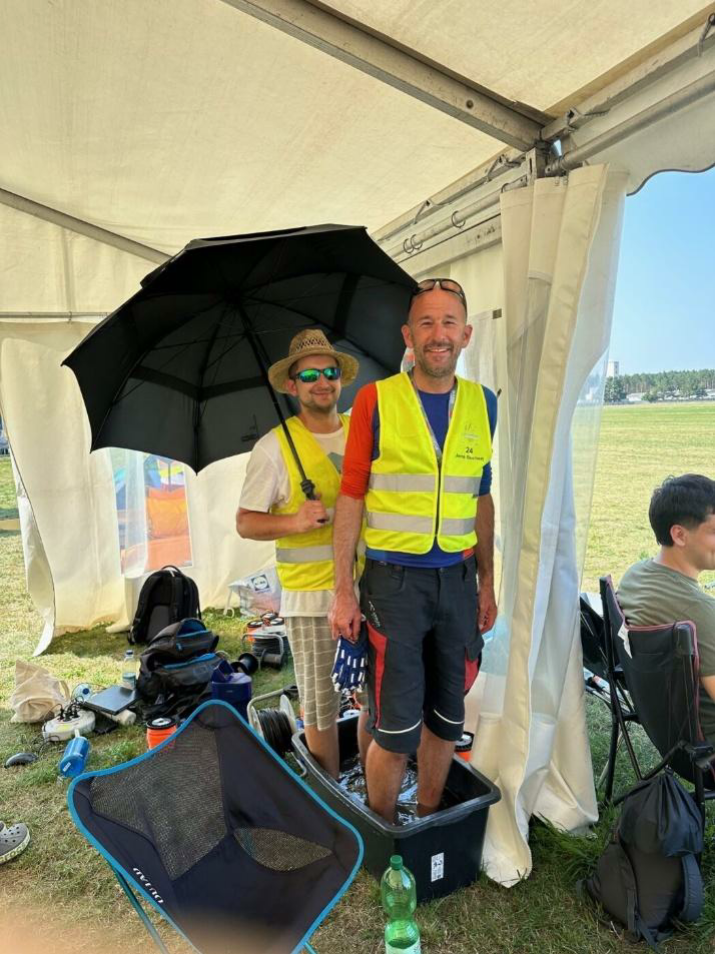
Despite the demanding weather, the overall atmosphere in Nardt was positive and focused. The high temperatures tested both pilots and helpers, but creative solutions—from ice cream and water sprays to Jens’ improvised “footbath”—helped everyone cope. The teamwork and mutual support on the field were exemplary.
Acknowledgements
Looking back, the World Championship in Nardt was not only a sporting success but also an organizational achievement of the highest order. The official organizing committee, together with the aeroclub of Hoyerswerda, created an environment in which pilots could perform at their best.
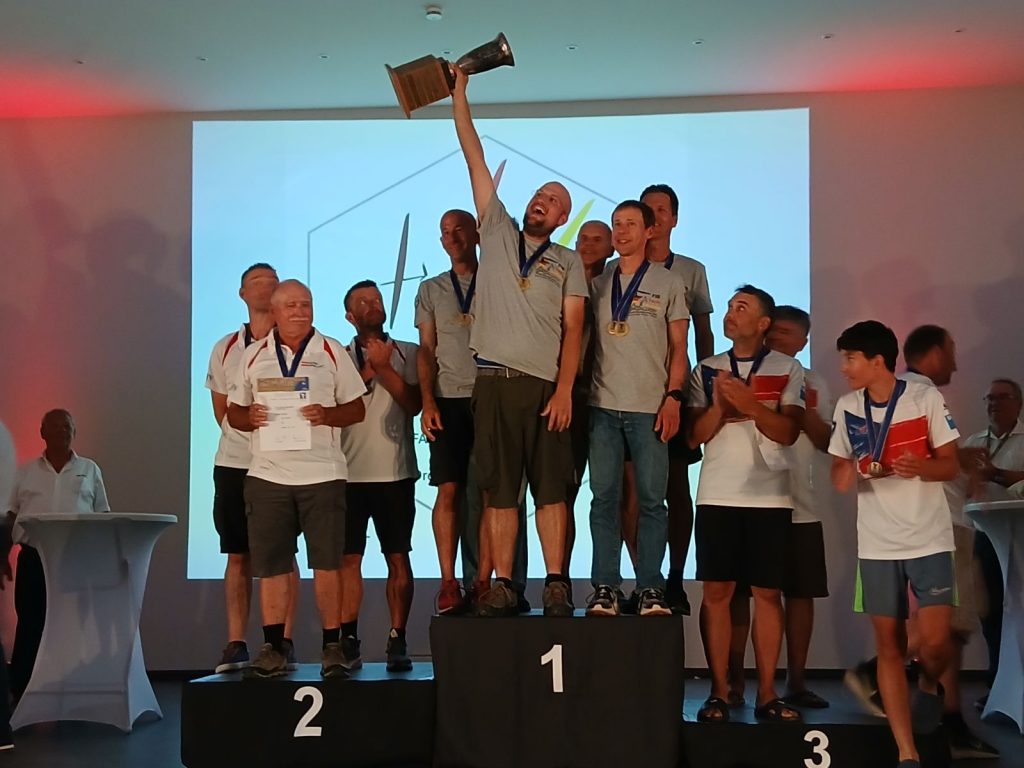
The work of the base judges deserves special recognition. In extreme heat, they delivered consistent and accurate decisions, and in the rare cases where uncertainty arose, they handled reflights or clarifications with professionalism and transparency. This consistency gave all pilots full confidence in the procedures.
The contest management on the flightline ran the schedule smoothly and without stress, making sure that rounds began on time and that helpers were coordinated effectively. Behind the scenes, the technical preparation was equally impressive: spare equipment was available for every system, and even the small issues seen during the Pre-Contest had been fixed before the main event.
Catering was another highlight, not only providing meals and drinks but also a touch of comfort in the form of cold refreshments and, yes, plenty of ice cream. Social events such as the “Bergfest” with live music, including free drinks and ice cream kindly sponsored by Armin Hortzitz (thank you!), the flight demonstration of the manned historic SG38 glider, as well as the boat trip on Lake Senftenberg, added to the spirit of camaraderie and ensured that the World Championship was remembered not just for the competition, but also for its atmosphere.
On behalf of the German team, I would like to extend our sincere thanks to everyone who made this event possible. The organizers and helpers set a standard that will be remembered and appreciated by all who took part. And to all the nations that came to Germany for a great week, celebrating our sport of F3B.
Closing Words
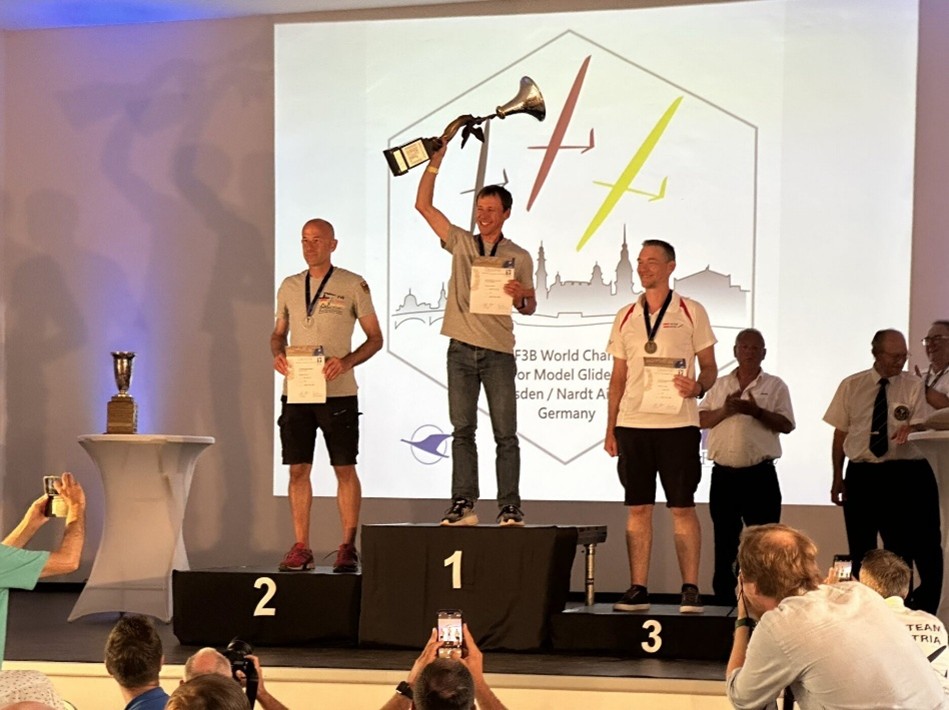
Our German team came together from different backgrounds, with different habits and perspectives, but united by one goal: to perform at our best on the world stage. Problems were addressed openly, teamwork grew stronger every day, and in the end, we achieved more than we could have hoped for.
F3B is a true team sport. I am proud and grateful to have been the Team Manager of this exceptional group of pilots and helpers.
Thank you all — Thomas, Johannes, Martin, Judith, Theo, Matthias, Steffen, Jens, and Andreas — for your dedication and spirit!
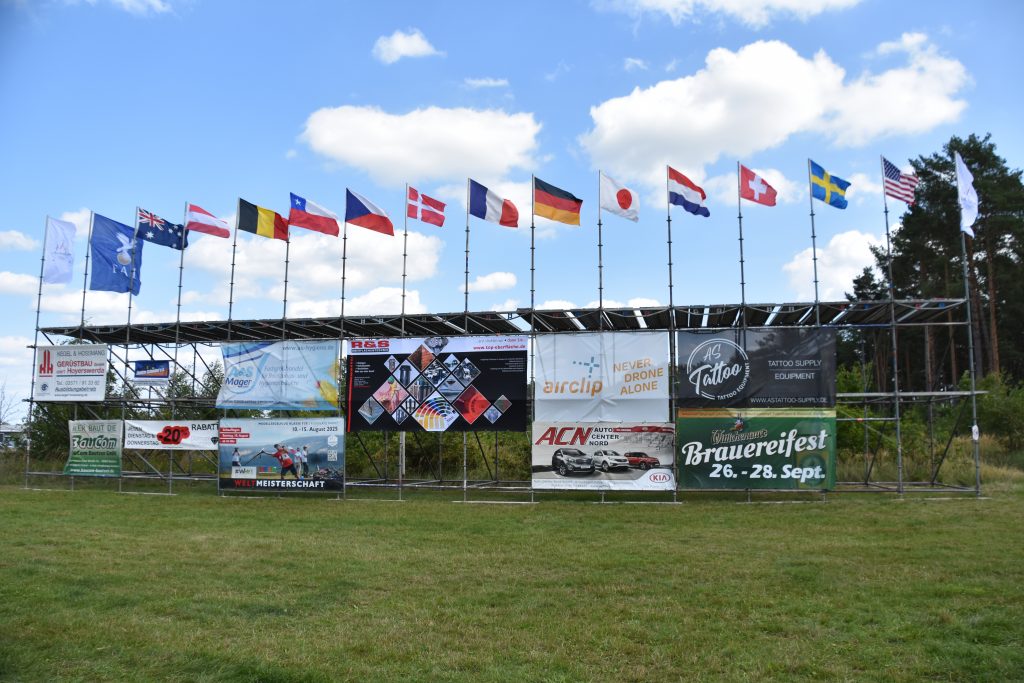
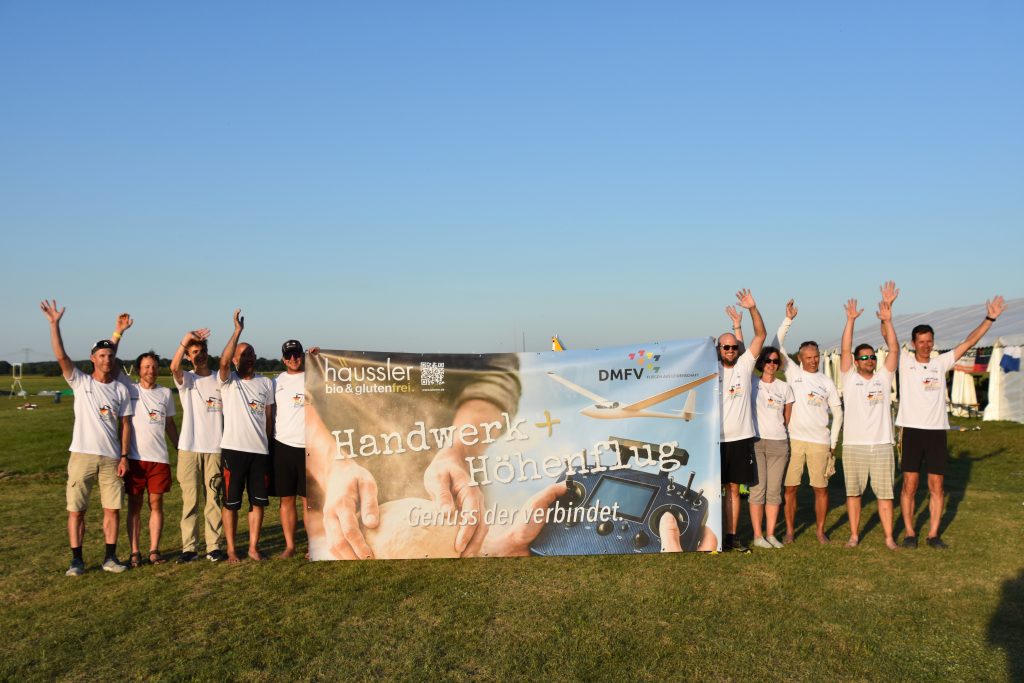

Pingback: Reports and Pictures of the World Championships 2025 – fooblog